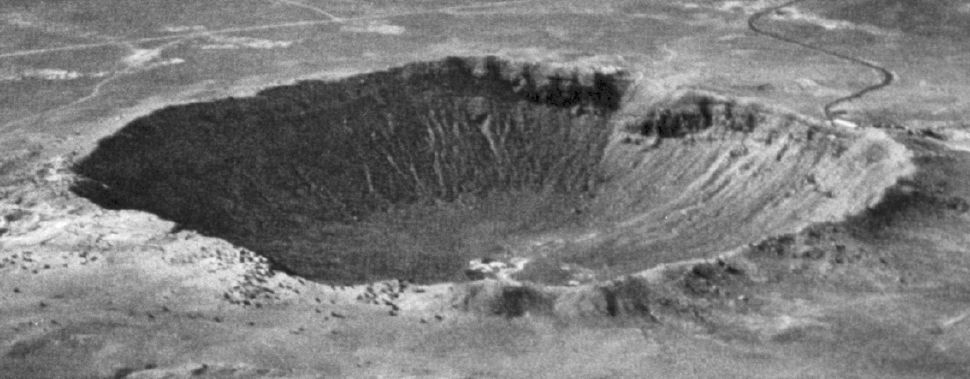Meteor Program Chair:
Scott Kranz
106 N Darrowby Drive
Raymore, MO 64083-9181
(816) 522-8921
E-mail: s.kranz1@comcast.net
What are meteors and why do they glow?
Anyone who has spent time outdoors at night has seen an occasional “shooting star” in the dark sky. These fleeting streaks of light are nothing more than minute specks of interplanetary debris colliding with the upper regions of the Earth’s atmosphere. What makes these tiny specks appear as bright streaks is the tremendous velocity at which they strike the Earth’s atmosphere. Meteoroids (meteors traveling in space) can orbit the Sun at a velocity of up to 42 kilometers per second (26 miles per second). When these meteoroids encounter the Earth, they may enter the atmosphere a speeds up to 72 kilometers per second (45 miles per second). It is the tremendous friction that causes the meteor to produce light and to ultimately disintegrate before reaching the Earth’s surface. Very rarely a meteoroid with sufficient size will enter the Earth’s atmosphere and remnants of the original mass will survive the journey through the atmosphere. These remnants are called meteorites.
As the rare, larger meteoroids enter the atmosphere, they often leave a smoke trail behind. This trail can last from a few seconds to many minutes. The longer lasting trails are called trains. While they start out straight, the speedy high altitude winds (around 80 kilometers or 60 miles high) can distort them into strange shapes.
Most meteoroids traveling through space are particles of interplanetary collisions that occurred eons ago. These particles were thrown into random orbits around the Sun and they account for a majority of the meteors we see. Other meteoroids are formed by the disintegration of comets and asteroids. They travel in much the same orbit as their parent bodies (the objects from which the meteoroids originally separated). During the course of a year, the Earth encounters many of these orbits producing more meteors in our sky. It is possible to predict the date that the Earth encounters the particles associated with specific comets and asteroids since the Earth intersects their orbits on the same date each year.
When these intersections occur, there is a chance that a meteor shower will be produced. Unfortunately, the word “shower” is a gross exaggeration of what actually occurs. A strong meteor shower will usually produce only one meteor per minute, hardly a shower compared to a rain shower! When you take into consideration the fact that on average, only five or six meteors are visible per hour, then the additional meteor per minute (60 per hour) is impressive.
Although meteors may be seen at any hour of the night, they are best seen in the hours between midnight and dawn. The reason for this is that during these hours we are facing the same direction as the Earth is moving around the Sun. Therefore we are oncoming space rather than space we leave behind. During the dark evening hours, meteoroids have to catch up with the Earth in order to collide with it. In the early morning hours, we are colliding head-on with the meteoroids and there are many more to be seen. The highest rates will occur near 6:00 a.m. and the lowest rates will occur near 6:00 p.m. It is much like the situation where a car is driving through a snowfall. Many more snowflakes will strike the front windshield than will hit the rear window.
In addition to daily variations in the meteor rate, there are variations also seen during the year. Rates of sporadic (random or non-stream) meteors are highest during the second half of the year by a factor of two. Aside from the annual showers, one can expect to see up to five meteors per hour during the winter and spring months. During the summer and fall months expect to see up to ten meteors per hour.
– Robert D. Lunsford
Meteors Section Recorder
Assocation of Lunar and Planetary Observers (A.L.P.O.)
 The Barringer Meteor Crater near Flagstaff, Arizona. A 30 ton iron meteorite named the Canyon Diablo Meteor, roughly 160 feet across, impacted the Colorado Plateau about 50,000 year ago. The crater is now 560 feet deep and has a rim that rises another 148 feet. It is roughly three quarters of a mile across. When the meteor hit the Earth, the energy of 20 million tons of T.N.T was released to form the crater. While events like this happen only once every 50,000 years, you might see one of its smaller cousins shoot across your sky.
The Barringer Meteor Crater near Flagstaff, Arizona. A 30 ton iron meteorite named the Canyon Diablo Meteor, roughly 160 feet across, impacted the Colorado Plateau about 50,000 year ago. The crater is now 560 feet deep and has a rim that rises another 148 feet. It is roughly three quarters of a mile across. When the meteor hit the Earth, the energy of 20 million tons of T.N.T was released to form the crater. While events like this happen only once every 50,000 years, you might see one of its smaller cousins shoot across your sky.
Related Links
- Meteor Observing Program Introduction
- Observing Meteors Techniques?
- Printable Blank Meteor Observing Form in Excel Format, PDF Format
Find Your Meteor Program Award



